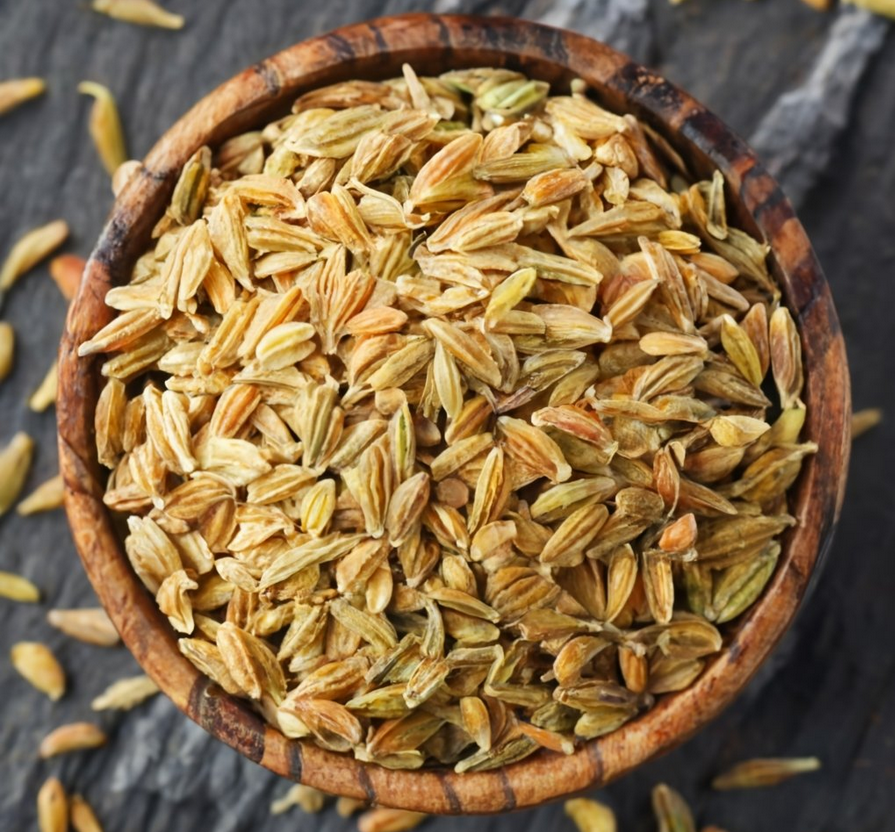Dried Fennel: Unraveling Its Appearance and Characteristics

Dried Fennel is a versatile herb derived from the fennel plant. It undergoes a drying process to preserve its aroma, flavor, and appearance. Let’s explore what dried fennel looks like and its various properties.
Appearance of Dried Fennel
Dried leaves:
Dried fennel leaves retain their vibrant green color after drying. They have a feathery texture similar to fresh fennel leaves. Dried leaves retain their delicate appearance, making them visually appealing and easy to incorporate into a variety of dishes.
Dried seeds:
Dried fennel seeds are small and oval in shape. They have a slightly rough texture and can vary in color, often darker than the dried leaves. The seeds add visual appeal to dishes and can be used as a seasoning or flavoring agent.
Dried roots:
Dried fennel roots are less commonly used than the leaves and seeds. They have a fibrous and woody texture. While the roots may not be as visually prominent in dishes, they can still add flavor when used appropriately.
Aroma and Flavor
Aroma:
Dried fennel has a distinct licorice-like aroma. The flavor is delicate yet aromatic, adding a unique character to dishes and culinary creations. It adds a tantalizing scent that enhances the overall sensory experience.
Flavor:
The flavor of dried fennel is sweet with a subtle hint of bitterness. It carries herbal notes that add a refreshing and aromatic quality to dishes. The combination of sweetness, bitterness and herbal notes makes dried fennel a versatile ingredient in a variety of recipes.
Culinary Uses
Seafood pairing:
Dried fennel is a popular choice for enhancing the flavor of seafood dishes. Its aromatic and refreshing qualities complement seafood, adding depth and complexity to the overall flavor. It can be used in marinades, sauces or as a garnish to enhance seafood-based recipes.
Infusing oils, vinegars and spirits:
Dried fennel is often used to infuse oils, vinegars and spirits with its unique flavor profile. It adds a distinctive and aromatic element to these ingredients, creating infused products that can be used in dressings, marinades, or cocktails. For example, fennel-infused oil can be drizzled over salads or used to sauté vegetables.
Seasoning:
Dried fennel seeds can be crushed or ground and used as a seasoning in a variety of recipes. They add a distinctive flavor to dishes ranging from soups and stews to breads and pastries. The seeds can be sprinkled over roasted vegetables, added to spice blends, or used as a topping for breads and crackers.
Quality and Sourcing
Reputable sources:
When purchasing dried fennel, it is important to choose a reputable source that offers high-quality products. Online stores such as Shoplongino offer reliable dried fennel sourced from trusted suppliers.
Ordine Contadino:
One such reputable source is Ordine Contadino, which sources dried fennel from the Cembra Valley in Trentino, Italy. The company uses a careful drying process to preserve the essential oils and flavors of the herb. Their dried fennel is available in 10-gram packages, ensuring freshness and convenience for culinary enthusiasts.
Conclusion
Dried fennel has a distinct appearance, depending on its form, with bright green leaves, small oval-shaped seeds, and fibrous roots. It has a licorice-like aroma and a sweet, slightly bitter, herbal flavor. Whether used in seafood dishes, to infuse oils and vinegars, or as a seasoning, dried fennel adds a delightful and aromatic element to culinary creations. Choose a reputable source like Ordine Contadino for quality dried fennel products.
FAQs
What does dried fennel look like?
The dried pale green or light brown seed you might recognize from your spice rack—the one that looks a lot like cumin and caraway—is an aromatic spice known as fennel, with a flavor similar to (and often confused with) that of sweet anise seed.
What do you use dried fennel for?
Use to flavour fish, meat and vegetable dishes, as well as breads and chutneys. You can also chew the whole seeds to freshen your breath, and they’re believed to aid digestion, too.
What can I use instead of dried fennel?
The best fennel substitute for the dried seeds? Caraway seeds! Caraway seeds have a similar peppery, subtle black licorice flavor: because they’re also in the carrot family! In fact, they’re often used in the same way as fennel seeds in Eastern European recipes.
What is dried fennel?
Fennel (Foeniculum vulgare) is an herb with yellow flowers. The dried seeds are used in food. The dried seeds and oil are also used as medicine. Fennel is native to the Mediterranean, but is now found throughout the world.
Can fennel fronds be dried?
According to The Barbeque! Bible, you can dry fennel stalks in the oven to preserve them. Just remove all fronds, and arrange the stalks in one layer on a baking sheet. Bake them at 200°F for 3 hours, then turn off the heat and let them hang out in the oven overnight to finish drying.
What does fennel look like?
With its wispy fronds and bulbous base, fennel looks like a feather-topped, potbellied cousin to celery. But its flavor is remarkably different. The white bulb and bright green fronds have a gentle, slightly sweet anise flavor. The stalks are tough so they’re usually not eaten.
Is cumin and fennel the same?
But cumin and fennel are two different plants; the botanical name of cumin is Cuminum cyminum whereas the botanical name of fennel is Foeniculum vulgare. Both Cumin and Fennel belong to the Apiaceae family. The seeds of cumin are brownish in colour whereas seeds of fennel are greenish in color.
Why is fennel good for you?
Fresh fennel bulb is a good source of vitamin C, a water-soluble vitamin critical for immune health, tissue repair, and collagen synthesis ( 2 ). Vitamin C also acts as a potent antioxidant in your body, protecting against cellular damage caused by unstable molecules called free radicals ( 3 ).
